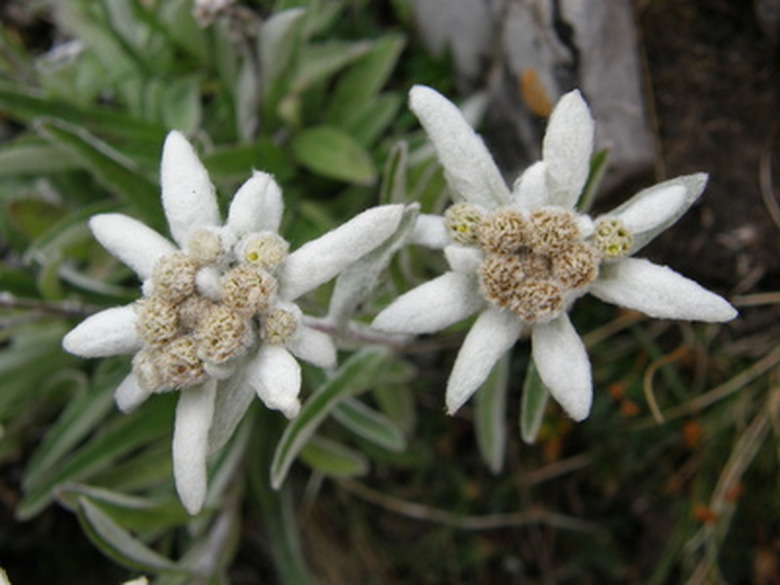How To Care For Edelweiss Plants
Things Needed
- Edelweiss seeds OR
- Edelweiss plants
- Seed compost with grit
- Black plastic bag
- Lime
- Sand
- Peat moss
- Compost or cow manure
- Mulch
A hardy alpine perennial, Edelweiss is an ideal plant for rock gardens, containers, or areas of your landscape that have a dry, rough, sandy loam soil. Edelweiss may bloom in early to mid-summer, though it will be short-lived for hot summer areas. Native to the high mountains of Europe and parts of Asia, Edelweiss can be grown in USDA zone 2 to 9 landscapes.
Starting Edelweiss Seeds
Step 1
Fill your seed flats or pots with a well-draining seed compost that has some grit added to it. In its native environment, Edelweiss grows in well-draining, rough, sandy loam and will germinate best in a medium that is similar.
Step 2
Sow your Edelweiss seeds on top of the soil in your seed flats or pots. Do this one to two months before the last frost in your area.
- A hardy alpine perennial, Edelweiss is an ideal plant for rock gardens, containers, or areas of your landscape that have a dry, rough, sandy loam soil.
Step 3
Place your planted seed flat or pots in a black plastic bag, then put it in your refrigerator, not the freezer, for three weeks. Edelweiss seeds must have a period of cool before germination. After the three week period, exchange the black plastic bag for a clear plastic bag.
Step 4
Place your plastic covered seed flat or pots in a place that will receive strong light, but be cool in temperature. During this time, and until your seeds become seedlings, keep the soil moist, but not wet.
When your Edelweiss seedlings are 2 to 3 inches high, transplant them into your landscape or into a container.
Edelweiss in Your Landscape
Step 1
Mix into heavy, compacted soil equal amounts of lime, sand, and peat moss. Add a smaller amount of compost or cow manure before planting your Edelweiss. This mixture also works well as the potting mix for Edelweiss planted in container gardens. If your soil is already gritty and sandy and well-draining, such as in a rock garden, this step can be skipped.
- Place your planted seed flat or pots in a black plastic bag, then put it in your refrigerator, not the freezer, for three weeks.
- When your Edelweiss seedlings are 2 to 3 inches high, transplant them into your landscape or into a container.
Step 2
Plant your Edelweiss plants where you now have rough, gritty, sandy loam soil that, ideally, has a pH reading of 6.5 to 7.5. Your Edelweiss plant prefers a soil that drains well and will not do well if planted in heavy, compacted soil.
Step 3
Water your Edelweiss once a week. Edelweiss naturally lives where there is not much soil moisture and does not require a lot of watering. During the winter, or in areas that receive heavy summer rains, protect, or shelter, your Edelweiss from receiving too much moisture by covering it.
Step 4
Cover your Edelweiss entirely with mulch over the winter if you live where winter snow will not cover it, or it is planted in an area of your landscape that will not get an ample amount of snow to cover it. Edelweiss needs to be covered during the winter. In its natural environment, snow will cover it. The mulch will simulate the snow coverage for your Edelweiss.
- Plant your Edelweiss plants where you now have rough, gritty, sandy loam soil that, ideally, has a pH reading of 6.5 to 7.5.
- Cover your Edelweiss entirely with mulch over the winter if you live where winter snow will not cover it, or it is planted in an area of your landscape that will not get an ample amount of snow to cover it.
Tip
If you live in an area that receives frost, you can directly sow your Edelweiss seeds into your landscape before the last frost of spring.
Warning
If your Edelweiss is happy in your landscape, it may reseed itself. Otherwise, you will need to replant your Edelweiss every two to three years, because it is a short-lived plant.
